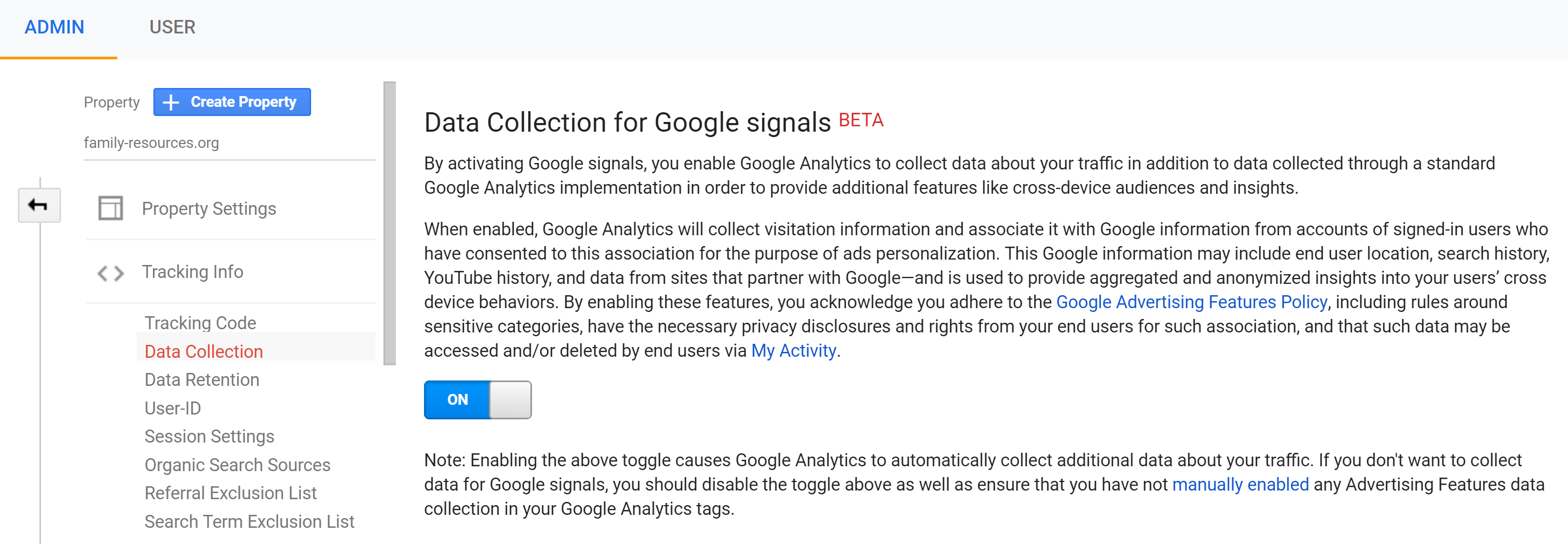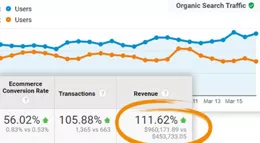Google Analytics 4 Deep Dive: Understanding Google Signals
Google Signals is a valuable tool for improving cross-device tracking and remarketing. This feature is found within Google Analytics 4 (GA4) and gives companies an idea of how much their audiences overlap and which campaigns need cross-device support the most. Over the past few years, Google Signals has become a common feature in many Analytics interfaces.
Let’s take a deep dive into Google Signals to learn how you can use it and apply its insights to your marketing campaigns.

What Are the Capabilities of Google Signals?
Google Signals is meant to enhance your current analytics usage. Many of the benefits of Google Signals are already available within GA4, but Signals improves upon the data and capabilities that you already have. The top four benefits, as explained by Google, include:
- Remarketing with Google Analytics 4: Brands that create remarketing campaigns can launch cross-device promotions.
- Advertising reporting features: GA4 can collect more information from the behavior of users.
- Demographics and Interests reports: GA4 collects additional information on various demographics and interests of users.
- Cross-device reports: Google can model the behavior of different user types to help develop campaigns that target different audiences better. These models are user-based rather than session-based.
The key to Google Signals lies in users who have turned on Ad Personalization. None of the Google Signals features are available for users who do not turn on Ad Personalization. This means that the data will only be collected from part of your audience. The users who don’t turn on this feature cannot be remarketed to and you won’t be able to understand their demographics better.
However, Google estimates that enough users have turned on Ad Personalization to the point where the sample size collected from this group reflects the entire body of web users. While you may not be able to reach your whole remarketing audience, you can trust the reporting that Google Analytics presents to you.
You can manually disable Google Signals easily. Google uses a toggle that you can click on or off to collect user data. If you need to stop collecting data or pause the collection for a short period of time, you can do it in this section.
You can see a screenshot of the path to the Google Signals section of Analytics below. This is what your Analytics page will look like once you have turned this feature on.
What Insights Can You Take Away From Google Signals
Once you’re familiar with the features and reports of Google Signals, you can apply these insights to your data analysis. Below are a few use cases for Google Signals that you can follow to improve your overall digital marketing efforts.
See Where Your Device Use Overlaps
What percentage of users access your content from multiple devices? This feature will provide immediate insight into how people engage with your brand. You can see the percentage of users who access each device and the percentage that use multiple features.
For example, a brand like LinkedIn might have a high overlap rate because users like to search for jobs on their mobile devices and then apply for them on their desktops. This is because they can access their resumes on their computer and can edit and attach their cover letters more easily. With this information, LinkedIn can develop a plan to make saving jobs across devices easier or work on a campaign to encourage more people to apply for jobs on their smartphones.
See Which Campaigns Have the Most Overlap
One of the biggest issues marketers have is tracking assisted conversions, or conversions that moved consumers to buy but weren’t necessarily the first or last touch. Cross-device reports can prevent brands from cutting certain marketing channels and losing an essential part of the consumer journey just because they don’t drive immediate sales.
Recapture Customers With Cross-Device Remarketing
Move customers deeper into the sales funnel with remarketing across different devices. For example, your user clicks on a paid ad to your website while on the bus. They scroll through your pages and consider your brand. Then, they become distracted when the bus reaches their stop. Your remarketing ad brings them back to your website when they see it later on their desktop. Your user is now more focused and ready to purchase, turning a top or mid-funnel customer into a bottom-funnel converter.
Learn How Specific Personas Behave
Because the data collected from Google Signals is user-based rather than session-based, you can better understand how your audiences behave. This, paired with better demographics and interests reporting, allows you to line up different behavioral patterns with different profiles. Brands can better create campaigns for specific target audiences based on their behavior and change the campaigns based on audience response.
For example, a brand might create a cross-device remarketing campaign for less tech-friendly audiences who prefer using their desktops for purchases.
Discover Other Analytics Tools and Capabilities
While the Google Signals feature is a valuable tool for better exploring your audiences and their behavior, it’s only one part of your data ecosystem. The vast majority of marketers have a disjointed data process. Each individual marketing channel has its own reporting and data.
At OuterBox, we want to take that a step further. We work to grow your data maturity so that all systems are connected together and centralized in one platform. You’ll benefit from looking at one centralized information source on which you can base your decisions. Let’s discuss how OuterBox can help you grow your business.


